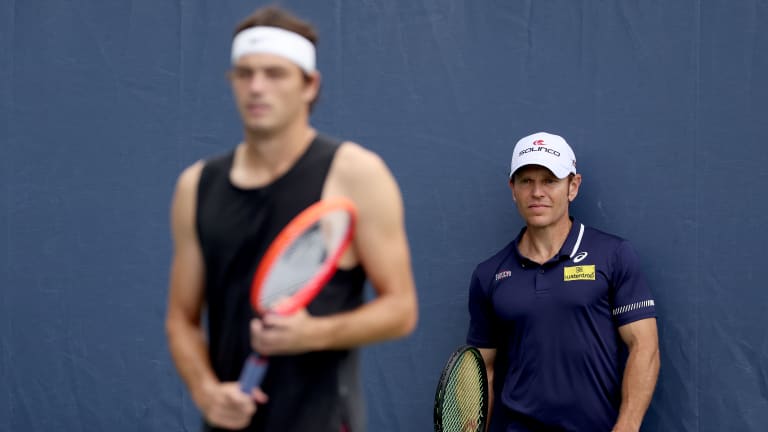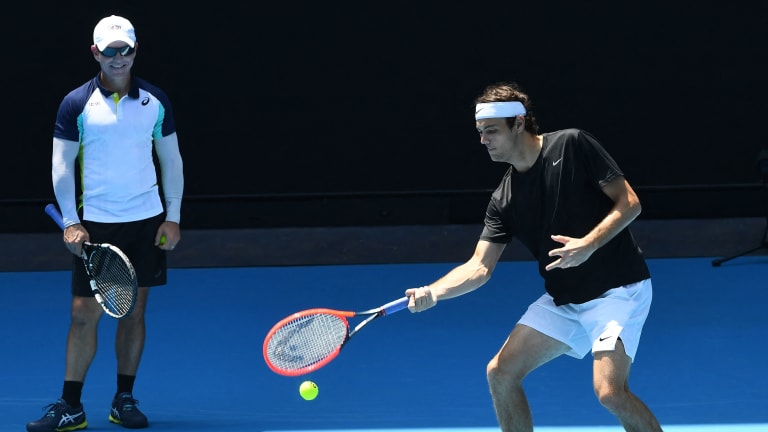Tennis.com Interview
Holding Court with... Michael Russell, coach of Taylor Fritz with an unbreakable poker face
By Feb 26, 2024Tennis.com Interview
A year into retirement, Garbiñe Muguruza reconnects: “Tennis wants me back!”
By Apr 22, 2025Tennis.com Interview
Aryna Sabalenka on Marg-Arynas, team TikToks—and her quest for that elusive Porsche
By Apr 19, 2025Tennis.com Interview
Jan-Lennard Struff sees Munich title defense bid as 'perfect opportunity' to turn 2025 around
By Apr 14, 2025Tennis.com Interview
Lorenzo Musetti manifested his 'special' week in Monte Carlo with first Masters 1000 final
By Apr 12, 2025Tennis.com Interview
No logic, just a feeling: Andrey Rublev "always knew" he wanted to work with Marat Safin
By Apr 07, 2025Tennis.com Interview
Brad Gilbert, Patrick McEnroe weigh in on U.S. men's tennis evolution
By Apr 05, 2025Tennis.com Interview
Patrick McEnroe decries Jannik Sinner suspension, tags Joao Fonseca as future star
By Apr 04, 2025Tennis.com Interview
On chicken farm, Danielle Collins embraces “crunchy granola lifestyle”
By Apr 03, 2025Tennis.com Interview
Feeling like a teenager, Alizé Cornet, 35, makes triumphant comeback from retirement
By Apr 02, 2025Tennis.com Interview
Holding Court with... Michael Russell, coach of Taylor Fritz with an unbreakable poker face
“I literally have no expression”: Talking to the 45-year-old former player about life and work on the road with the top-ranked American man.
Published Feb 26, 2024
Advertising

Fritz has reached a different major quarterfinal in each of his seasons working with Russell (2022 Wimbledon, 2023 US Open, 2024 Australian Open).
© Getty Images
Advertising
Advertising

Under Russell's guidance, Fritz has firmly held onto the title as the ATP's No. 1-ranked American.
© AFP via Getty Images